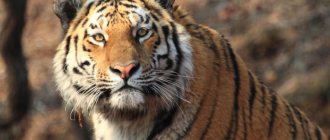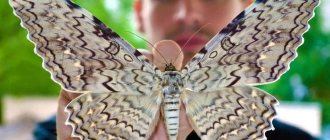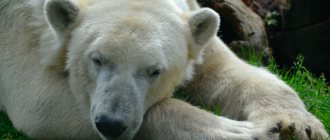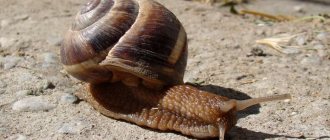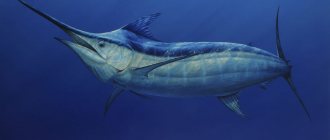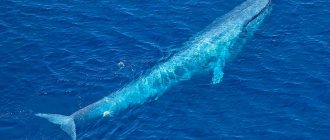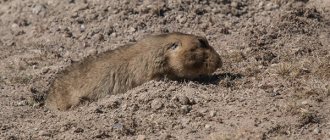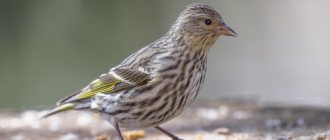No. 14 Andean Condor
Weight: up to 15 kg
Its body weight is approximately the same as that of the pelican from the previous paragraph, it is on average 11-15 kilograms for males. Females are slightly smaller - up to 11 kg. In general, the length is at least 100 cm, the wingspan is also quite large - up to 3.3 m, a larger mark has been recorded only in four species of birds. Among them you can grow the wandering, royal, pink and curly pelican. The Andean condor has a special role in mythology, especially in the Andes and surrounding regions. Therefore, it is not surprising that this feathered creature acts as a national symbol of many countries - Colombia, Argentina, Peru, etc.
The Hyacinth Macaw is the largest parrot in terms of body length.
The Hyacinth Macaw is the largest and perhaps most stunning species of parrot in the world. It is endemic to Brazil, Bolivia and Paraguay. Birds can reach a body length of about 1 m and weigh up to 1.7 kg. The birds have blue feathers, but in some cases the neck feathers are slightly grayish in color. Their habitats have been destroyed and large numbers of hyacinth macaws are kept as pets and are therefore classified as a vulnerable species according to the IUCN.
No. 13 Trumpeter Swan
Weight: up to 17.2 kg
Its weight exceeds the weight of previous birds and is 17.2 kilograms. This is quite a lot, one might even say that the trumpeter swan is one of the heaviest birds on the entire planet. It is found in North America (mainly). As for the wingspan, it can exceed 3 meters, the largest known representative of this species has a body weight of 17.2 kg, and its body length was 183 cm. For some period of time, swans of this type, unfortunately, were destroyed. The fact is that in the 19th and 20th centuries they were actively hunted, and by 1933 about 70 wild whelks were discovered in the area of remote springs. This meant only one thing: extinction could not be avoided. However, during photography in the waters of a river called Copper, in the state of Alaska around the 1950s, several thousand of these individuals were discovered. This led to the fact that the species began to actively develop. As a result, the number of trumpeters began to amount to about 46,000 birds by 2010.
The toucan is another bird famous for its beak.
By the way, remembering the large beaks, we cannot ignore the toucan. In addition, it is not only a bird with a large beak, but also a very beautiful bird.
Rainbow toucans are especially beautiful - black, with lemon-yellow cheeks and chest. And the size of its colorful beak, colored from green to orange, is about 50% of the size of the bird itself!
By the way, why the toucan needs it, scientists have been scratching their heads for a long time. And not so long ago, researchers from the Canadian Brock University and the Brazilian Sao Paulo came to the conclusion that the toucan regulates its body temperature with the help of its huge beak. When the heat sets in, the beak quickly heats up, taking heat from the body and releasing it into the air, and the network of blood vessels that permeates this part of the toucan’s body helps it in this.
No. 12 Bustard
Weight: up to 18 kg.
This representative of the bird world can weigh up to 18 kilograms and is widespread throughout Asia and Europe, although the majority of the population is still found in Spain and Portugal. Probably, birds of this type are considered the heaviest. The height of males is up to 105 cm, although the minimum mark starts from 90 cm. As for the length, this figure is 115 mm, and the wingspan can reach 2.1-2.7 m. An adult male can have a body weight of up to 18 kilograms , while females can weigh half as much. There is another representative of this species, the African bustard. Judging by the name, it is easy to guess that it comes from Africa. The male has a length of 120-150 cm, and his height is up to 120 cm. As for the wingspan, it can be 2.75 m. As is the case with the common bustard, the masses of females and males vary almost twice.
Crane
These are very beautiful, intelligent and graceful birds, which has become a problem for them - out of the 15 available species, 7 are subject to anthropogenic pressure. Individuals are quite common - they can be found in almost any part of the world, except South America and Antarctica. Birds cannot stand the cold - when low temperatures set in, they gather in flocks and go in search of warm places.
The height of an individual can reach 190-200 cm, and its weight can range from 8 to 10 kg. Wingspan up to 2 meters. Birds have a diurnal lifestyle. They sleep on one leg, often in a pond, thereby protecting themselves from attacks by predators. Cranes generally love ponds and wet biotopes and almost always settle in such landscapes. Only belladonnas live in the steppes.
The birds are very cautious and cautious, as with their height they are easy to spot. Of course, while searching for food, they can go out into the fields, but during the nesting period they behave unsociablely and always carefully monitor the situation. And they are very observant in terms of visitors. For example, if 2 hunters enter their territory and one returns, the cranes will wait for the second. Scientists say that birds can even count.
Like the eagle, the birds are monogamous. Having found the other half, they stay with her. Therefore, you can often find cranes in pairs, especially during nesting. But in another case, flocks can number up to 10,000 individuals. Moreover, the cranes are ready to fight for their territory. If a predator approaches, the bird will pounce, flapping its wings widely. This tactic allows you to scare off the attacker and protect yourself, your other half and offspring.
The offspring usually contains 2 eggs, rarely 1 or 3 eggs. Cranes take turns incubating eggs for up to 31 days. After hatching, the chicks stay in the nest for a couple of hours while they dry out, and then immediately “become” adults.
No. 11 Royal Penguin
Weight: up to 18 kg
It has the same body weight as bird number 12, on average it is 18 kg maximum, sometimes it can be more, but this is quite rare. As for height, it can be in the range of 70-100 centimeters, males are larger in size than females, this type of penguin is the second largest. By the way, the largest “dimensions” are characteristic of the emperor penguin, which belongs to a different subspecies.
No. 10 Cassowary-Muruk
Weight: up to 26 kg
This is a real giant, because its length can reach as much as one and a half hundred centimeters, and as for body weight, it is up to 26 kilograms. The favorite habitats of this insect are wooded areas in New Guinea, as well as New England. The body length of the average representative of the species is 150 cm, body weight in some cases can reach 26 kilograms. Favorite habitats are mountains and plains with forests, most often in high areas up to 3,300 m above sea level. Cassowaries are considered the most dangerous birds on planet Earth, because they have huge claws with which they can easily kill a person in a matter of seconds.
The largest flightless birds
The largest birds are tall and heavy; some of them can run fast and jump high, others can swim and dive well, but they have completely lost the ability to fly.
African ostrich - a giant among birds
The height of an adult African ostrich can reach 280 cm and weight 150 kg
The largest bird on our planet is the African ostrich. The height of an adult male can reach 280 cm, and that of a female – 200 cm; weight usually varies between 63-156 kg. The appearance of the ostrich is very peculiar - a large, well-fed body, powerful muscular legs, an elongated neck and a small head. The length of the head with beak is only about 12-14 cm, which is quite small for such a large bird. Despite the small size of the head, the ostrich's eyes are very large; the diameter of the eyeball reaches 5 cm and is the largest among land animals.
The body and wings are covered with soft feathers, and the head, neck and legs are devoid of feathers. The coloring of the male and female is different, the male has black feathers on the body, white on the wings and tail, the female has a more modest outfit, a grayish-brown tint predominates on the body, the wings and tail are off-white. The wings are underdeveloped, although their span is quite large - about two meters, but this is not enough to lift the ostrich into the sky.
These large birds live in Africa, preferring open spaces - spacious semi-deserts and savannas. They usually live in small families consisting of an adult male, several females, and chicks. Ostriches often settle next to herds of antelopes or zebras and roam with them in search of food and water. Birds have good eyesight; they are able to notice danger before others and quickly run away, thus warning other animals.
The height of ostrich chicks at birth is 18-20 cm and then every month they grow by 18-20 cm
The African ostrich is the record holder for running among birds - it can reach speeds of up to 70 km/h, while the maximum length of one step is 5 m. It can also abruptly change the direction of running without reducing its speed, confusing the predator with this maneuver. Sometimes the ostrich uses another trick to escape the chase: it suddenly lies down on the ground and stretches its neck, thanks to this trick the pursuer loses sight of it. But the ostrich never hides its head in the sand.
An interesting fact is that the male and the dominant female incubate the clutch alternately, the female in the daytime, and the male at night. This is due to the fact that the female’s plumage blends in with the sand and is invisible in daylight, while the black coloring of the male makes him practically invisible at night. An ostrich egg is the largest among all bird eggs, its length can reach 21 cm, its width is about 13 cm, and its weight is from 1.4 to 2 kg, which is about 20-36 times more than a chicken egg.
When the chicks hatch, the male takes an active part in raising them - protecting them from danger and teaching them how to find food. The life expectancy of the African ostrich in nature ranges from 40 to 45 years, and in captivity it can exceed 62 years.
Emu is Australia's largest bird
Emu height can reach 190 cm and weight 55 kg
The emu is second in size only to the African ostrich and is considered the largest bird on the Australian continent. Her body length is 150-190 cm, and her weight reaches 55 kg. Emus have long and very strong legs, allowing them to run at a speed of about 50 km/h, and their stride length can reach 275 cm. Their legs also serve for protection and help defend themselves in case of danger. An adult bird can break a human bone with one blow.
The emu's body is covered with soft brownish or grayish feathers, which protect well from both cold and heat. The wings are underdeveloped and reach a length of only 20 cm; at the end of each wing there is a small claw. The neck is long with sparse plumage, the head is small, the eyes are equipped with a membrane that protects from wind and dust.
Emus are active during the daytime and usually sleep at night, but their sleep is quite sensitive and can be interrupted by rustles and sounds up to 8 times a night. Birds feed on various fruits, herbaceous plants and roots; they can also diversify their menu by eating insects. They usually drink water once a day. Emus are good swimmers and love to swim in ponds on hot days.
The male emu builds the nest himself and then allows the females to lay eggs in it.
These birds are not monogamous. During the breeding season, females become aggressive and even engage in fights over the male, which sometimes last up to 5 hours. The male arranges the nest himself - he makes a hole in the soil and lines it with leaves and grass, and then allows the females to lay eggs in it. The weight of one egg can be 900 g, that is, it is about 12 times heavier than a chicken egg.
The male incubates and raises the chicks independently. Interestingly, during incubation, the color of the eggshell changes from dark green to dark purple. The chicks are born quite large and active, their height reaches 12 cm, and their weight is about 500 g. The male protects the babies and fiercely protects them from any danger; during this period he is very aggressive, and it is better not to approach him. The lifespan of an emu in nature is approximately 10-20 years.
Cassowary - a large bird with a helmet and a secret weapon
Cassowaries run fast, jump to a height of 150 cm and are excellent swimmers
The cassowary is a large bird with a very extravagant appearance and a ferocious disposition. Their height varies between 150-180 cm, and their weight is approximately 60 kg. There are three types of cassowaries: orange-necked, helmeted and muruk. They differ slightly in appearance, but they all have an unusual detail - a large horny growth on the head, which is called a “helmet”. This helmet gives the cassowary a very unique and slightly terrifying appearance.
Cassowaries have a large body, a long neck and very strong legs. The body and vestigial wings are covered with soft and fluffy black feathers. There are no tail feathers, and there are also no feathers on the head and legs. The powerful legs have three toes equipped with sharp claws. The cassowary has a secret and very dangerous weapon - a special sharp claw on its leg, the length of which reaches 12 cm. With this claw, the bird defends itself from enemies like a dagger, and is capable of inflicting serious wounds or even killing.
The 2004 edition of the Guinness Book of Records calls the cassowary the most dangerous bird on Earth.
Cassowaries can run fast, reaching a speed of 50 km/h, jump to a height of 150 cm and swim perfectly. In terms of behavior, they are quite cautious and secretive, prefer a solitary lifestyle and meet with individuals of the opposite sex only during the mating season. The male independently incubates and raises the chicks. He builds the nest himself and trusts the female only to lay eggs in it. While protecting the offspring, the male can be very dangerous and even capable of attacking people.
Cassowaries live in Australia, New Guinea and some nearby islands. Their diet consists mainly of fruits that have fallen to the ground, as well as mushrooms and small animals. In their natural habitat, cassowaries live for approximately 12-19 years, and in captivity they live up to 40 years.
The common rhea is a large bird that runs fast and hardly drinks water.
The bird got its name because the male loudly shouts “nan-doo” during the mating season, attracting females.
Rhea is slightly smaller in size than the previous species, but is also quite large in size - its height reaches 140 cm, and its weight is approximately 30-40 kg. This bird is capable of high speed, accelerating up to 60 km/h. While running, it can use its wings like a sail, spreading them to the sides and catching air currents. Rheas are also excellent swimmers and, if necessary, even swim across small rivers.
Externally, the rhea is similar to the African ostrich, but is almost half its size and has a number of differences in structure. The rhea, like the ostrich, has a large body, an elongated neck, a small head and strong long legs. But the rhea's head and neck are covered with feathers, and its feet have not two toes, but three. The feathers are soft, brownish-gray. Males are usually larger and darker than females. There are also albinos, who have white feathers and blue eyes.
The male rhea incubates the eggs on his own and cares for the offspring.
The bird got its name because the male loudly shouts “nan-doo” during the mating season, attracting females. When the time comes for breeding, the male makes a nest on the ground, lining it with twigs and dry leaves, and the females lay eggs there. Up to 80 eggs laid by different females can accumulate in one nest. The yellow-green eggs are large in size - about 13 cm in length and 9 cm in width, and their weight reaches 600 g. The male independently incubates the clutch and takes care of the offspring.
Rheas live in South America in Brazil, Argentina, Bolivia, Uruguay and Paraguay. They prefer to settle in open spaces overgrown with grass, shrubs and rare trees. They feed on fruits, seeds, leaves and roots of various plants, as well as insects and small vertebrates. Rheas can go without water for a long time, being content with moisture coming from the succulent parts of plants.
The emperor penguin is an excellent swimmer and diver who is not afraid of frost
The height of males can reach 130 cm, and weight – 50 kg
The emperor penguin is the fifth largest bird on Earth. The height of males can reach 130 cm, and weight - 35-50 kg, females are slightly smaller, their height is approximately 110 cm, and weight - 32 kg. Penguins have very well developed muscles, which are considered the most powerful among birds. The plumage is contrasting, the back is covered with black feathers, the chest is white, there is a light yellow spot under the neck, and bright orange spots are clearly visible on the sides of the cheeks.
Penguins have extraordinary endurance. They live in very harsh and unfavorable conditions of Antarctica, where the air temperature drops to −40 ° C, and wind speeds sometimes reach 140-200 km/h. They are protected from the cold by very dense feathers, as well as a layer of subcutaneous fat about 3 cm thick. Feathers not only protect against cold on land, but also have waterproof properties, thanks to which birds can swim for a long time in icy water.
Emperor penguins are excellent divers and swimmers. They are capable of diving to depths of more than 500 m and remaining underwater for longer than 20 minutes. To search for food, they often swim away from their colonies to a distance of about 500 km. They swim at a speed of 6-9 km/h. On land they walk slowly, swaying from side to side, and look a little clumsy. They also like to slide on the ice on their bellies, pushing off with their paws and wings.
To protect themselves from the cold, penguins gather in large groups, which can number up to several hundred individuals. The juveniles are usually located in the center, since it is most comfortable there; the rest of the birds gradually move from the edges to the middle so that everyone is in approximately equal conditions and can warm up.
At the age of 6-7 weeks, a penguin can eat about 5 kg of fish at a time
The mating season begins in March-April, at which time the birds create pairs. And in May or June, the female lays one large pear-shaped egg, weighing about 470 g and about 12 cm long. She carefully places the egg on the male’s paws and goes to sea in search of food to restore her strength. And the male holds the egg on his paws until the chick hatches. This is a very difficult period, as you have to fast for about four months, withstand severe frosts and wind gusts of up to 200 km/h. During this time, the male can lose 20 kg, which is about half of his weight.
When the chick is born, the male continues to hold it on his paws and feeds it with “bird milk” - a special curdled substance produced in its esophagus. Soon the female returns from the sea, she finds the male by his voice, takes the chick from him and feeds it for several weeks with half-digested fish accumulated in her stomach. During this period, the male goes to sea, where he actively feeds in order to gain lost weight. After this, the parents feed the chick fish in turns.
The lifespan of emperor penguins in the wild is usually about 20 years, but some can live up to 50 years.
No. 9 Darwin's Nandu
Weight: up to 28.6 kg
An alternative name for this bird is Rhea, its height is 90-100 centimeters, and its length is also up to 100 cm. As for body weight, its average mark, in turn, is 28-29 kilograms on average. Favorite habitats are on the plateau in the Andes, and it can also be found in different places of the South American continent.
No. 8 Turkey
Weight: up to 39 kg
It is likely that this bird was domesticated in Central America, at least this could have happened about 2000 years ago. The English name of the bird is consonant with the word “Turkey”, which is due to the erroneous identification of the representative with a species that was introduced into Europe through this country. The bird's body weight can reach 39 kilograms.
No. 7 Common Rhea
Weight: up to 40 kg
Throughout the entire American continent, this bird is considered the largest. She has strong legs, so she can reach speeds of up to 56 kilometers per hour. The primary habitats of representatives of this species are the territories of Paraguay, Uruguay, Argentina, as well as other countries of South America.
No. 6 Emperor Penguin
Weight: up to 45 kg
The body weight of this representative of birds can sometimes be 45 kilograms, and in some cases even more. This is endemic to Antarctica and at the same time the largest penguin in the world! Height can be up to 130 centimeters, and body weight can be up to 45 kilograms. There are practically no gender differences in terms of size and plumage.
13.Black vulture
- Family: Accipitridae
- Order: Falconiformes
This is one of the largest birds of prey. Prefers mountain slopes and hills untouched by humans. They are found especially often along the banks of lakes and rivers.
The size and weight of vultures varies depending on their habitat. And these are Southern Europe, Central Asia, Africa and the Middle East. Vultures do not show any interest in animals, only in corpses, because... These birds are scavengers.
Black vultures are faithful to their mate and their families often live separately, away from other individuals. Nests are built in the crowns of trees. Average life expectancy is 40 years. The largest bar weight is 14 kg.
#5 Emu
Weight: up to 60 kg
The body weight of this creature is 60 kilograms, which is basically the limit. The only thing taller than it is the ostrich, by the way, a direct relative. The height can be 1.9 m. Representatives of this category are quite heavy and have massive bodies. By the way, this is one of the rare cases when the female’s body size is larger than that of the male. The speed that this bird develops while running is 48 kilometers per hour. Today the birds are endemic to Australia.
No. 4 Orange-necked Cassowary
Weight: up to 70 kg
This bird is very large in size and looks very impressive. It was first discovered in the northern part of New Guinea. The body weight of females can reach 70 kilograms; by the way, males weigh a little less. Despite their stocky build, cassowaries develop impressive speed while running. It is usually equal to 50 kilometers per hour.
No. 3 Helmet-bearing Cassowary
Weight: up to 83 kg
This bird is widespread in Indonesia, most often it is found in the tropics - in wooded areas. It will not be difficult to meet her in New Guinea, Australia (in the North-East of the country). The altitudes in which this representative of birds lives are small, mainly up to 1100 meters, and in some countries - even up to 500 m. As for the size of the bird's body in height, it is up to 170 centimeters, and the mass, in turn, is equal to up to 50 kilograms, if we talk about males, and up to 68 kilograms, if we talk about females. The maximum growth rate that was recorded in the cassowary is 190 centimeters. The helmeted cassowary is the largest breed of bird in Asia and Australia. At least since the disappearance of the Arabian ostrich. Today it is the world's largest surviving representative of birds, although the "growth" of the emu in some cases can be much higher.
Pelican
A bird with a large beak (reaching a length of 50 cm) - the Australian pelican - is also considered the largest flying bird on this continent. And thanks to the record ratio of body and beak sizes, the Australian pelican is included in the Guinness Book of Records.
Surely many have seen the amazingly shaped beak of a pelican. The feathered fisherman uses it as a net. He plunges his open beak into the water and as soon as something gets there, he closes it and presses it to his chest. This helps displace water and position the fish so that it is easier to swallow. And pelicans living in salty bodies of water also use their huge beaks to collect rainwater.
No. 2 Somali Ostrich
Weight: up to 130 kg
This bird ranks second in size, at least among those who managed to survive to this day. She cannot fly, however, her size is impressive. The homeland of this representative of birds is the Horn of Africa, Ethiopia, Somalia. Some time ago, this creature belonged to a subspecies of ostriches, however, starting in 2014, it began to belong to a separate species. The body weight of a male today can reach 130 kilograms.
No. 1 Common ostrich
Weight: up to 156.8 kg
This is by far the largest bird in the world, and it really exists. It was first discovered in Africa. The average weight of an individual is in the range of 63-145 kilograms, that is, the largest birds reach the weight of two adults. Some males can reach a body weight of 156.8 kilograms, and their maximum height is 2.8 m. Females, in turn, are smaller, their weight is up to 2.0 m. Ostriches are endowed with huge legs that allow them to accelerate to 70 kilometers per hour. In just one step they are able to cover 3-5 meters. As you can see, there are quite a lot of mysterious creatures in our world, and the large birds that exist on planet Earth today are the best confirmation of this. But they, in turn, are descendants of dinosaurs, which modern man has never seen alive.
Steller's sea eagle
A large bird that is a predator. The Steller's sea eagle hunts in flight, has keen eyesight, powerful talons and a beak. The weight of an adult reaches 7.5-9 kg. The total length of the body is 105-112 cm, one wing is 57-68 cm. Sea eagles are widespread along the coast of the Kamchatka Peninsula. The bird is also found in East Asia. However, it can only be seen abroad during the winter migration period.
It feeds on fish, especially loves salmon. It also does not refuse mammals: the Steller's sea eagle can eat not only a hare, but also a harbor seal. The bird was listed in the Red Book of Russia as an endangered species.
